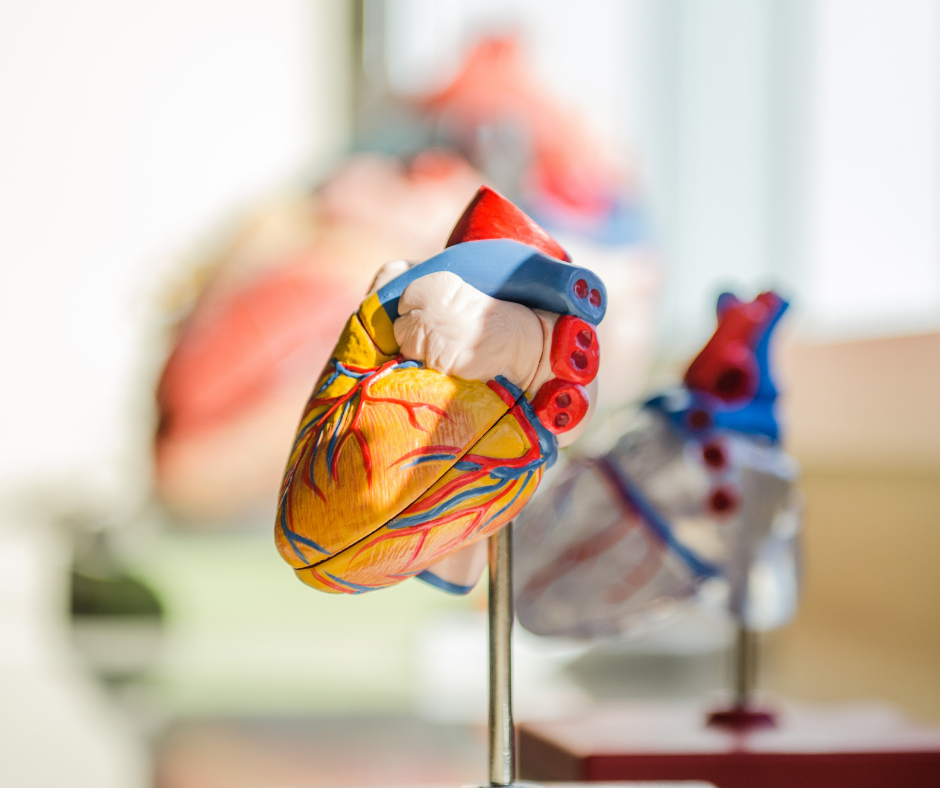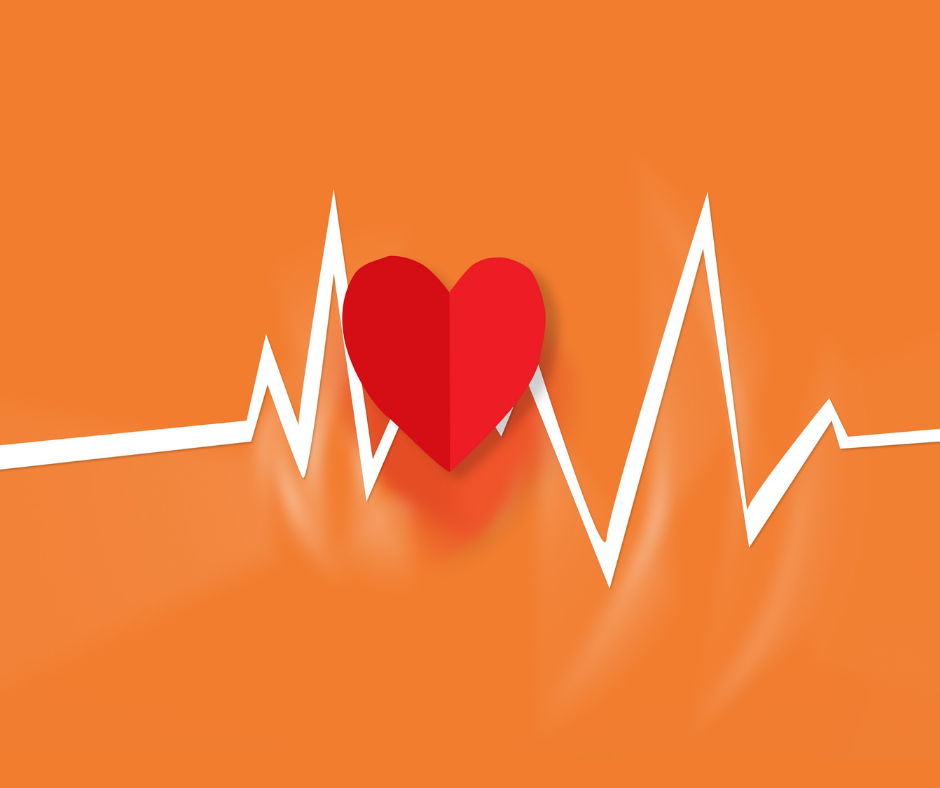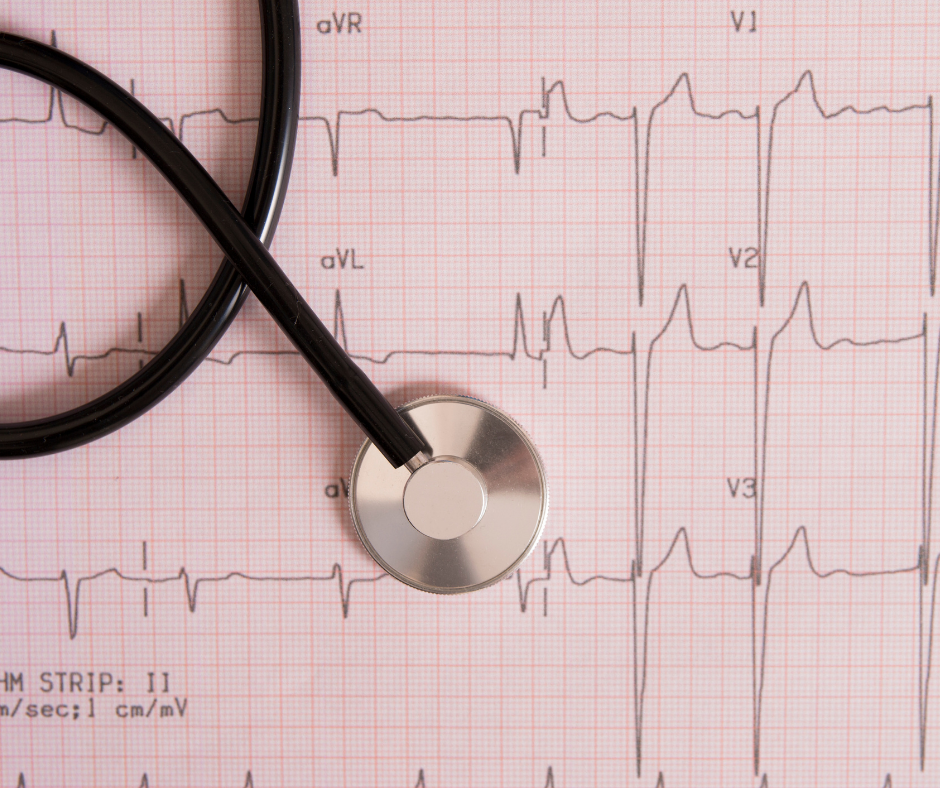By Claire Bacon, ACN, CNC
Perhaps you have noticed an unusual flutter or skipping feeling in your chest lately. Maybe you have been very tired, or feeling light-headed more often than normal. If so, it could be a condition called arrhythmia. This refers to a change in either the speed or pattern of your heartbeat. Arrhythmias can feel very unsettling. However, most people with arrhythmias have nothing to fear. It could be a sign of a simple nutritional deficiency, or an excess of emotional stress, caffeine or sugar.
Before we get into the specifics of arrhythmias, let’s review a bit of cardiac physiology…
Cardiac Physiology and Arrhythmias
The heart is a muscular, hollow organ that pumps blood throughout the body. It has four chambers – two lower chambers called ventricles, and two upper chambers called atria. The four heart chambers work in a synchronized manner to contract and pump blood. As it circulates, blood delivers oxygen and nutrients throughout the body.
The heart has an electrical system that creates and conducts electrical impulses. These impulses tell the chambers when to contract and pump blood. Electrical impulses begin at the sino-atrial node (SA node), which is a cluster of specialized cells at the top of the right atrium. The SA node functions as the heart’s “natural pacemaker”. It produces electrical impulses at regular intervals and sets the proper rhythm for the heartbeat.
From the atria, the electrical impulse reaches the atrio-ventricular node (AV node), located between the atria and ventricles. The AV node functions like an electrical “gatekeeper”. It slows down each impulse before passing through to the ventricles.
The impulse travels to the ventricles through conduction pathways made of specialized muscle fibers. The impulse stimulates the ventricles, causing them to contract and pump blood. When at rest, the SA node normally keeps the heart rate at 60 to 80 beats per minute (bpm). With aerobic activity or excitement, the SA node increases the heart rate, sometimes up to 180 bpm or higher.

Arrhythmias (Irregular Rhythm)
The speed at which the heart beats is called the heart rate, and the pattern of the heartbeat is the rhythm. While under evaluation with an echocardiogram or Heart Sound Recorder, we want to see the same regular rhythm, over and over. We don’t want to see it speeding up or slowing down.
During arrhythmia, there is a change in either the rate or pattern of the heartbeat. It could be too fast (tachycardia), or too slow (bradycardia). Or, it could become irregular or erratic. It feels like palpitations, light-headedness, or even fainting spells. Fainting happens when the heart is not able to pump enough blood and oxygen to the brain.
Arrythmias can be common in people with heart disease, especially heart valve disease, or a generally weakened heart. High blood pressure, lung disease, or an overactive thyroid gland can also cause arrythmias. Even people who are otherwise healthy can experience arrhythmias for external reasons, such as:
- caffeine,
- alcohol,
- sugar,
- tobacco,
- food or chemical sensitivities, and/or
- stress.
If we want to ensure optimal function way into our later years, we’ve got to figure this out now!

A Few Big Words
Arrhythmias can be very distressing, but most are generally not life-threatening. Most people can tolerate an irregular rhythm as long as the rate is not too fast. If you have been having issues with your heart rhythm, you may have heard some of these big words from your doctor:
Supraventricular Arrhythmias:
- Premature Atrial Contractions (PACs) – atrial beats that occur earlier than expected and briefly interrupt the heart rhythm.
- Supraventricular Tachycardia – a series of very rapid heartbeats that start in the atria or in the AV node.
- Wolff-Parkinson-White (WPW) Syndrome is also called Accessory Pathway Tachycardia, where an abnormal “bridge” of tissue connects the atria and ventricles, and causes very rapid heart rhythms to occur. A catheter ablation fixes the condition.
- Atrial Fibrillation – many tiny waves of electrical activity continuously flow across the atria, as opposed to one solid contraction and then silence. The additional uncoordinated contractions can increase the risk of blood clots.
- Atrial Flutter is a rapid rhythm caused by the re-entry circuit in the right atrium. As in atrial fibrillation, the atria beat very fast; however, the overall rhythm tends to be regular.
Ventricular Arrhythmias
- Premature Ventricular Contractions (PVCs) are very common. They are beats that occur earlier than expected and briefly interrupt the heart rhythm. They start from an abnormal site in one of the ventricles.
- Ventricular Tachycardia – a fast heart rate that happens when one or more extra electrical pathways (re-entry circuits) exist in the ventricles, usually where the heart muscle is damaged or diseased.
- Ventricular Fibrillation – occurs when multiple sites in the ventricles fire electrical impulses very rapidly and erratically. As a result, the ventricles quiver and cease to pump blood. This condition can lead to cardiac arrest, so should be taken very seriously.
Slow Rhythms
- Sick Sinus Syndrome – when the SA node fails to perform its role as the heart’s natural pacemaker. It may be too fast, too slow, or may speed up and slow down randomly.
- Heart Block – electrical impulses are either delayed or stopped as they travel along the pathway from the atria to the ventricles. This can happen partially (skipped beats) or fully (very slow and unreliable heartbeat).

Importance of B Vitamins (Specifically B4)
Did you know, 80 percent of cardiovascular “events” are preventable and directly relatable to nutritional status? Yes! There is so much you can do to take care of your heart. And you don’t have to wait until there’s a problem!
From a nutritional perspective, no matter what diagnosis (or no diagnosis) you have, we know the most important food the heart needs for performance is the B vitamin complex – naturally sourced from foods with complete cofactors. Out of all the B vitamins, the one most important for a normal heart rate, regular rhythm, and strong tone of the muscle is Vitamin B4. Never heard of it? That’s because Vitamin B4 cannot be synthesized in a lab. You can only get it from natural foods. Therefore, no marketing and advertising dollars are put behind promoting Vitamin B4. There is no money to be made from it. However, there is all the health in the world to gain from eating it!
Simply stated, Vitamin B4 has been clinically proven to benefit cardiac fibrillation, arrhythmias, dilatations, and myocardial weakness. It is commonly cited by researchers as being the “anti-paralysis” vitamin. It is the key nutrient known to prevent Beri Beri (which literally translates as, “I can’t, I can’t”.
The natural foods and animal tissues that contain the most Vitamin B4 include:
- dried grass,
- wheat germ,
- peanuts,
- beef heart,
- beef liver,
- pork brain, and
- pork kidney.
However, who wants to eat those foods every day? Not me! Luckily, we have all of these nutrients contained within our key cardiovascular products: the original Cataplex B, the new Cataplex B-Core, and Cataplex G, along with the multivitamin products: Cardio-Plus and Vasculin.

Importance of Magnesium and Potassium
Magnesium is greatly important in situations with cardiac arrhythmias. Magnesium increases the natural threshold you can sustain before fibrillation occurs. Furthermore, magnesium preserves electrical stability and function of the heart cells and tissue.
Magnesium deficiency increases the risk of heart disease, specifically because it impacts:
- Blood pressure, by affecting vascular smooth muscle cell relaxation
- Endothelial cell function, increasing risk of thrombosis and atherosclerosis
And increases the risk of:
- Cardiac necrosis and calcifications
- Cardiac arrhythmia and seizures
- Coronary artery disease.
Although a concentrated magnesium can be contraindicated with certain medications, whole food magnesium sources are always welcome in the diet.
How do we get more magnesium into our diet? By eating the dark leafy greens we hear so much about (but often forget at dinnertime)! These include: kale, Swiss chard, beet greens, collard greens, and spinach.

Potassium is a key ingredient for the heart for many reasons, but mainly because it acts like a brake for the autonomic nervous system. Potassium, as an alkalizing mineral, has the potential to slow the heart rate down and calm the nervous system. It’s one of our tried-and-true fast-acting methods to normalize a racing heart, when we observe certain patterns on a Heart Sound Recorder scan. We’ll often recommend eating more organic kelp and alfalfa, or simply taking Organically Bound Minerals as a supplement.
Medications Can Cause Arrhythmia
Did you know, taking certain prescription drugs or even over-the-counter meds can cause irregular rhythms? That’s right, if you’re taking meds and experiencing little flutters or racing heart, better check Drugs.com for a list of side effects. It’s a sad fact of where we are with today’s medical system. Oftentimes, people obtain multiple medications from different doctors, and never check for interactions or deficiencies that might occur with long-term use.
Common drugs that might have this unwanted side effect include:
- Antidepressants like Elavil, Lexapro, and Celexa
- Calcium channel blockers like Verapamil and Diltiazem
- Beta blockers like Sotalol and Carvedilol
- Adrenergic drugs like Phenylephrine and Clonidine
- Cardiac glycoside
It’s a first step we always do in our nutritional consults: check for interactions between medications, and also review our references for potential nutrient deficiencies. I cannot stress how important a double check is when you’re taking medications. Many times, we have seen that a person’s primary complaints are actually caused by some of these interactions! Let us know if we can help, and we’ll send you back to your doctor with a detailed list of items to discuss.
Supplement Highlight:
Cataplex B-Core is a relatively new product from Standard Process, which is a revamped formula from the original Cataplex B. Looking at the label, you’ll think “well, this doesn’t contain much of anything”, but oh yes, it does! Cataplex B-Core contains the highest amount of Vitamin B4 compared to anything else in the product line. It is naturally sourced from beef liver, nutritional yeast and defatted wheat germ.
E-Z Mg contains several naturally-occurring types of magnesium, sourced from Swiss chard and beet leaf greens. Again, looking at the label, it doesn’t look like much is in there – because everything is naturally occurring, not synthetic. A high dose of any one particular type of magnesium cannot be claimed on the label, when it is the naturally occurring cofactors that give E-Z Mg its effectiveness and strength.
Hawthorn is the best-known herb for the heart in western herbalism. It is very safe, helps with strengthening, normalizing rhythm and circulation, and is also considered a mildly calming herb for the nervous system. We love to recommend this product for a weak heart, or for feeling very troubled with family estrangement or grief.
Collinsonia Root (aka Stone Root) is a vascular strengthener. It’s good if you have weak veins, varicose or spider veins, or lower leg throbbing. You can use it generally to strengthen your cardiovascular system, or more specifically to relieve discomfort from hemorrhoids.
Final Thoughts on Arrhythmias
If you’ve been feeling some concerning symptoms, it’s important to look to diet, lifestyle, and complementary therapies before jumping to more invasive methods. Natural vitamins, minerals, and phytochemicals have awesome potential to ease arrhythmia symptoms without the side effects. As a result, you can easily become healthier from the inside out!


